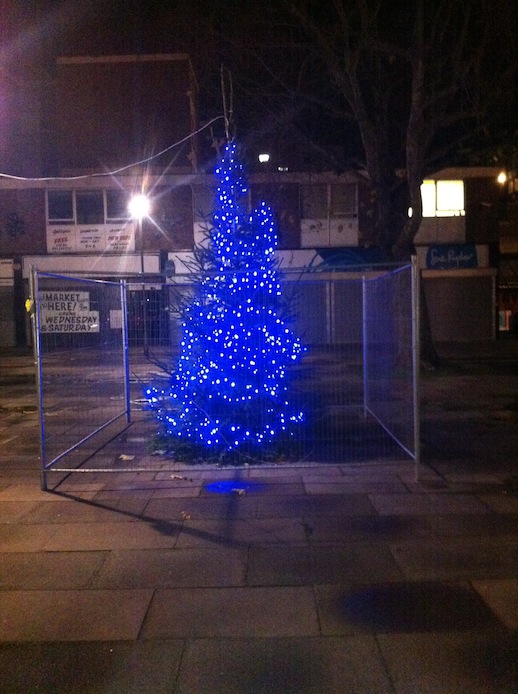In which, as the year comes to its end, our friends and collaborators look back and share their moments:
There is a sorry looking Christmas tree in the middle of the Leegate Centre, a mile or so south of Lewisham. It is covered in lurid blue lights and is caged on each side by a metal fence. It is a strange beast, dislocated from its forest siblings and stranded in a 1960s shopping centre named by The Telegraph in 2010 as the worst in Europe.
Poor tree.
Step away and look through another face of the prism and it looks quite different. In a good light, it’s a symbol of the superhuman effort that has seen people get together to open a café, to start a community centre, and to buy this tree in order to bring some life back to a sadly rundown spot. Lewisham Council didn’t provide the people with a Christmas tree this year (something to do with the £85m in cuts they’re facing and the fact that the town centre chain stores which include Boots, McDonalds and M&S couldn’t muster the money either) but the Leegate Centre did. It’s a small tree-shaped triumph over adversity and a tiny signal of optimism, and maybe even resistance.
There’s another thought that pops into my head as I think about the Leegate Centre and its Christmas tree. In old English, Lee means ‘clearing in the wood’, and now this pine is the sole arboreal reminder of a place that was forest until the seventeenth century.
It’s a marker. A reminder. A neon signpost of what was. We were here, it says, many of us. We weren’t forced into wearing a dress of glowing lightbulbs, wired up by a line to the street lights, and we didn’t sit in metal pens with a few paving slabs removed for our coppiced trunk to stand in mud. We grew and we died and we rotted with bugs and fungus and then our children grew again, tiny saplings pushing and shoving towards the light in the canopy. Sue Ryder Shop, Stones The Newsagent and the butchers where you can get three joints for a tenner? All trunks and branches and leaf mulch.
I celebrate the Leegate tree, and not just because this has been my year of trees. The last twelve months of writing about the wildish spaces of South London has incubated an awareness that mostly, humans just get in the way, trying to plant and manage and dress things up when really we should just let the trees roam free, according to their own slow pulse. We need the trees more than they need us – even the blue ones.
